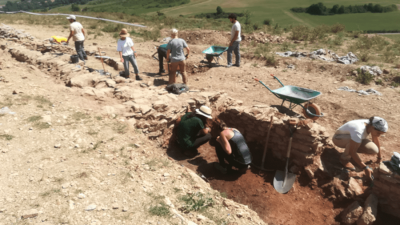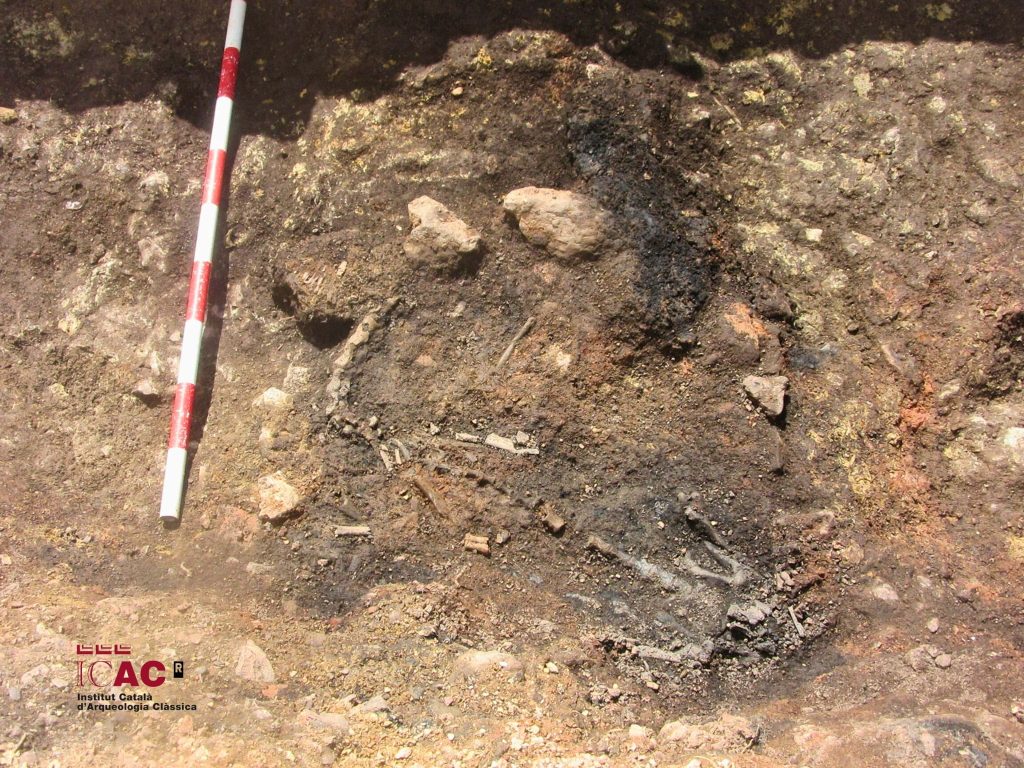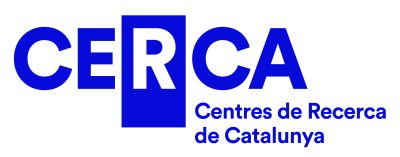
A research led by the UAB discovers the remains of six dead animals burned inside a stable in the Pyrenean village of Bellver de Cerdanya 2,200 years ago.
Victims of a violent fire that may have been related to the passage of the Carthaginian army, the animals appeared along with some of the inhabitants’ valuables, such as a gold earring. The finding has made it possible to reconstruct the economic patterns of these inhabitants, where livestock farming had an important weight.
A research at the Tossal de Baltarga archaeological site, in Bellver de Cerdanya (Lleida Pyrenees), has brought to light the charred remains of a building burned by a fire 2,200 years ago, in the Iron Age. The building had two floors and the fire caused the roof, the support beams, and the upper wooden floor to collapse.
Lídia Colominas (GIAP, ICAC-CERCA) has carried out the osteological study of the six animals that were found burned on the lower floor of the building
The researchers, led by Oriol Olesti, lecturer of the Department of Antiquity and Middle Age Studies at the UAB, found the charred remains of a horse, four sheep and a goat, along with valuables such as an iron pickaxe and a gold earring concealed in a pot.
Archaeologists also found cereals such as oats and barley, and cooking vessels, with residues showing that the people using the building had been consuming milk and cheese and eating pork and lamb stews.
Findings show a complex economy
The study reveals the diversity of practices that were carried out in a Pyrenean settlement in the Iron Age: livestock, to obtain and produce wool, meat, milk, manure, traction, and riding; agriculture; forestry exploitation; and mining.
The importation of some ceramic vessels and the presence of several coins from Emporium and southern Gaul indicate a modest, but effective, trade with neighboring communities. Therefore, the complex economy of these settlers indicates, for Oriol Olesti (UAB), principal investigator of the research, “an Iron Age society adapted to their environment and took advantage of their resources in the highlands. But it also shows their contact with other communities”.
The passing of Hannibal’s troops
Tossal de Baltarga was a place of residence and lookout point for the Cerretani community with an important fortified settlement nearby, the Castellot de Bolvir. It seems to have lacked defensive walls, but had an excellent view over the river and the main travel routes.
We know that Hannibal crossed the Pyrenees fighting against local tribes, also probably against the Cerretani. Not many archaeological remains are preserved from this expedition, but Tossal de Baltarga is probably one of the best examples, Oriol Olesti (UAB).
A livestock farm adapted to the territory
The research, published on May 17, 2024, in the prestigious scientific journal Frontiers in Environmental Archaeology, results from interdisciplinary work combining various study techniques and approaches.
Lídia Colominas (researcher in the GIAP research group at ICAC-CERCA and coordinator of the archaeozoological studies of the site), has carried out the osteological study of the six animals that were found burned on the lower floor of the building.
Her work led to document that the ovicaprine animals were adults at the time of their death and that these animals were exploited to obtain wool and milk. In addition, it is possible that they were also used as breeders, without forgetting the use of their manure to fertilize the fields or as fuel. This suggests that the value of the products that could be obtained from these animals in life was more important than that of their meat. Regarding the horse, he was 4 years old when he died, an age at which horses are usually considered adults and can begin to be ridden.
The presence of a horse bit in the same room could indicate that it was already training for this activity, emphasizes Lídia Colominas.

The analysis of the stable isotopes of the four sheep, carried out by Chiara Messsana (IPHES-BUSCA), in turn, has made it possible to show for the first time that one of the sheep practiced altitudinal mobility during its second year of life. The animal moved to less cold lands in winter and returned to the Pyrenees in summer.
Therefore, according to Lídia Colominas, “the evidence of mobility in at least one of the sheep confirms these links with the plain, which probably must be related to the need for salt and winter pastures. At the same time, it shows the complexity of the livestock practices carried out in this settlement, where only part of the herd moved.”
The success of interdisciplinary work
The research was led by Oriol Olesti (researcher of the Department of Antiquity and Middle Ages Sciences at the UAB); with the participation of Jordi Morera, Joan Oller and Jose M. Carrasco (researchers from the same department); Anna Berrocal, Oriol López Bultó, Laura Obea, Nadia Tarifa and Joaquim Sisa López de Pablo (researchers from the Department of Prehistory at the UAB), Lídia Colominas (Ramón y Cajal researcher in the GIAP group of the Catalan Institute of Classical Archeology, ICAC-CERCA), Marta Portillo (Institució Milà i Fontanals of the CSIC), Paula Tárraga (Univ. of Heidelberg) and Chiara Messana (IPHES-CERCA).
Read the article in open access!
“The exploitation of mountain natural resources during the Iron Age in the Eastern Pyrenees: the case study of production unit G at Tossal de Baltarga (Bellver de Cerdanya, Lleida, Spain)”, Front. Environ. Archaeol., 17 May 2024, Sec. Landscape and Geological Processes, Volume 3 – 2024, https://doi.org/10.3389/fearc.2024.1347394
Oriol Olesti, Jordi Morera, Joan Oller, Jose M. Carrasco, Lídia Colominas, Marta Portillo, Anna Berrocal, Oriol Lopez-Bultó, Laura Obea, Nadia Tarifa, Paula Tárraga, Joaquim Sisa-López de Pablo, Chiara Messana.
An impact investigation
The results of the study have had a media impact in several media news:
«Troben noves pistes del pas de l’exèrcit d’Anníbal per la Cerdanya», Diari ara, May 17, 2024.
«Descubren que un violento incendio congeló en el tiempo un aterrador crimen del siglo III a.C. en los Pirineos», La Razón, May 17, 2024.
«Archaeologists Reveal Iron Age Building Destroyed by ‘Violent’ Fire», Newsweek, May 20, 2024.
«’It was not a peaceful crossing’: Hannibal’s troops linked to devastating fire 2,200 years ago in Spain», LiveScience, May 17, 2024.
«A devastating fire 2,200 years ago preserved a moment of life and war in Iron Age Spain, down to a single gold earring», Phys.org, May 17, 2024.
About the Catalan Institute of Classical Archaeology (ICAC-CERCA)
The Catalan Institute of Classical Archaeology (ICAC-CERCA) is a CERCA center established as a consortium in 2003 by the Government of Catalonia and the Rovira i Virgili University. It is a Catalan institution with an international scope, at the forefront of research and conservation of archaeological heritage. Its headquarters are located in Tarragona, a city recognized as a UNESCO World Heritage Site in the year 2000. Its researchers work to understand the past through the study of archaeological remains and promote the preservation of the historical legacy. We are CERCA!
For more information, visit www.icac.cat.






